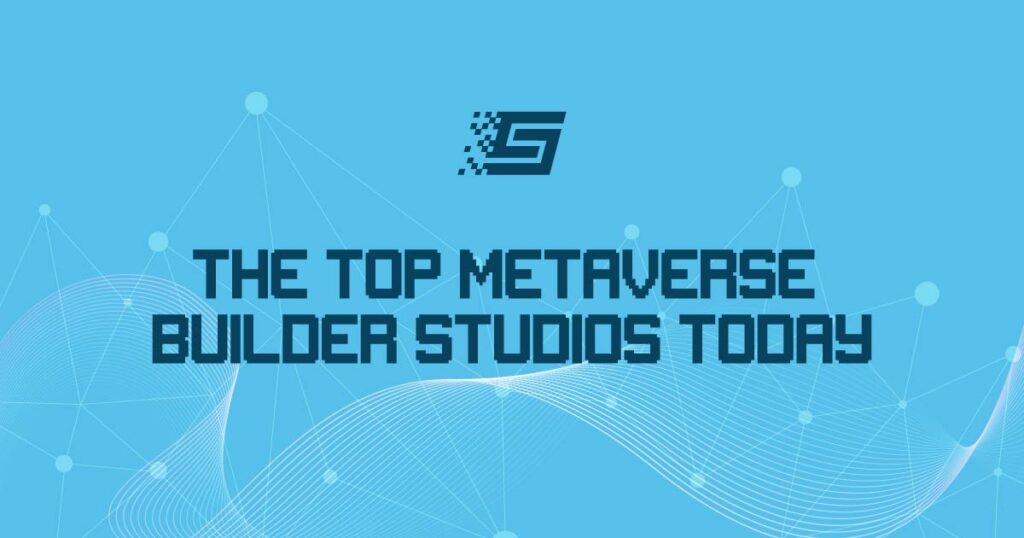Useful Tools For Entering The Metaverse
What is the metaverse, and do I really need to explore it?
For the past few years, we keep on hearing the word “metaverse,” which today inspires developed countries to debate about what it is.
Let’s delve into metaverse development technologies and their use cases for a fuller insight.
Role Of VR Technology In The Metaverse
You can experience the metaverse through virtual reality (VR) and enjoy a realistic experience. By utilizing virtual reality technology, you can step into a range of different stores, gain knowledge, explore the virtual realm, and participate in fantastic occasions. It fosters a sense of community but can also allow us to feel the warmth of hugs and holding hands with loved ones all over the world.
Unity’s CEO foresees that AR/VR headsets will overtake gaming consoles by the year 2030. VR technology can enable the metaverse to disrupt vast industries.
Use Cases Of VR Tech In The Metaverse
Hyper-Reality:
Hyper-reality provides significant benefits, for instance, data realization, medical transformation, and improved shopping experiences. Many businesses nowadays confront difficulty in securing the vast amount of data they have access to, whether financial, administrative, or medical. Realizing this data in a hyperreal way – visualizing vast amounts of data – might serve as a stepping stone for VR’s use in some of these fields.
Immersive Interface:
Day by day, business startup use cases for immersive technology are evolving, empowering clients with a lucrative audience. Learning platforms like those offered by higher education institutions are exciting. Immersive learning could take various forms in the metaverse, from 360-degree films explaining the solar system to virtual lectures with skilled teachers that will improve students’ comprehension.
Scaled-Up VR World Advancement:
Statista estimates that the worldwide augmented reality, virtual reality, and mixed reality industry was worth $28 billion in 2021 and that by 2028 it will be worth over $250 billion. The metaverse is a social technology breakthrough that enables digital representations of humans (avatars) to connect in various fields.
Role Of AI Technology In The Metaverse
The fully realized metaverse would require advances in many areas, including hardware devices and software. AI (artificial intelligence) holds the key to unlocking these devices.
Through a fusion of artificial intelligence, mobile app developers have been showing more interest in creating AI mobile applications. AI is critical for the metaverse experience because it helps to strengthen the connection between the physical and digital worlds.
Use Cases Of AI Tech
Accurate Avatar Creation:
An AI system could evaluate 2D user images or 3D scans to create extremely immersive-looking renditions. The avatar can then plot various facial expressions and emotions, making it more lifelike. Several firms, such as Ready Player Me, are already utilizing artificial intelligence to aid in the creation of avatars in the metaverse.
Multilingual Accessibility:
Language processing is currently the most widespread use of AI. It can convert natural languages into machine-readable patterns and transmit them to the recipient. This occurs in milliseconds, just as a constructive debate would.
Intuitive Interfacing:
AI can also be used to improve human/computer communications. Based on the electrical impulses the user transmits, a high-tech, AI-powered virtual reality headset would be able to deduce plans you may have to travel around the metaverse.
Role Of Blockchain Tech In The Metaverse
If you are curious whether blockchain technology is required for the metaverse, the answer is yes, it is.
Blockchain technology enhances virtual reality, allowing users to secure their digital assets. Individuals all over the globe employ NFTs (non-fungible tokens) to build and trade digital assets to gain leverage. A good example is Axie Infinity, a trading game integrating blockchain tech inspired by Pokémon and Tamagotchi.
Use Cases Of Blockchain Technology
Tokens Of Exchange:
The metaverse blockchain implies protective storage devices, tokens, and encryption keys for transferring virtual information. Consequently, blockchain tech enhances people’s confidence in a metaverse ecosystem as confidential data isn’t accessible to third parties.
Hyperledger:
One of the most well-known use cases of Hyperledger is within the healthcare industry since it can be used to design a blockchain network that could take significant control over its supply chain. Another way Hyperledger may be implemented is by creating channels for training whereby businesses can use the portal to provide instructional videos to employees digitally.
Smart Contract:
Smart contracts allow the metaverse to successfully manage ecological players’ moral, economic, and other interactions. Furthermore, smart contracts enable you to put the fundamental laws of the metaverse into action.
Role Of Neural Technology In The Metaverse
In the same way that a neuron works in the human body, neural technology is similar. The main goal of developing this tech is to construct computational systems that can solve specific problems, much like a human brain would. The neural network’s support tasks include playing video games, speech recognition, machine translation, computer version, and medical diagnosis. It simulates human brain function, which will increase decision-making capabilities in certain areas, including:
- Medicare fraud detection
- Targeted marketing
- Medical diagnosis
- Voice recognition (natural language processing)
- Robotic control systems
Better Interaction:
Ever wondered how Google Assistant responds to orders? Artificial Neural Networks (ANN) are key to enabling robots to react immediately in the same manner as individuals do.
Edge Computing:
Edge computing is revolutionizing business computing nowadays. Computing tasks need appropriate designs, and the architecture suitable for one type of computer activity wouldn’t necessarily suit all computing tasks. Edge computing has developed a feasible architecture for distributed computing that allows storage and computation resources to be deployed closer to the data’s source and, ideally, in the same geographical region. Industrial producers are using edge computing to evaluate real-time analytics to discover production problems and enhance companies’ manufacturing efficiency.
Neuralink:
Among Elon Musk’s ambitious projects, “Neuralink”, which aims to connect the brain to the internet and interact with computers to help operate robots, is near completion. It will also aid in studying electrical impulses in the brain and provide emerging solutions to different medical issues.
Role Of Web3 In The Metaverse
Web3 and the metaverse are both the future of the internet, but they are very different. The next generation of the internet will consist of terms like “web3” and the “metaverse”. So what is web3, and how will it affect us? Let’s define it as simply as possible:
- Web1 version – yesterday’s internet, approximately from 1991 to 2004.
- Web2 version – today’s internet.
- Web3 version – significant changes have already taken place in how we interact over the internet.
Data privacy issues that we are witnessing with web2 today are very real. If you think that anything you put on Facebook, TikTok, or Instagram is your property, you can think again. Control over access to users’ data is totally in the hands of a central authority. For a simple example of this, the XYZ website collects personal information in exchange for its services, whereas web3 is different since no single entity has control over the sensitive data as it is open to everyone. Currently, we live in a web2 digital world dominated by big names, but this is rapidly shifting into web3.
Use Cases Of Web3 Technology
Decentralization:
DeFi stands out as a major highlight among real-world web3 use cases as it presents prolific opportunities for improving financial inclusion. The DeFi and web3 connection depends on the fact that DeFi services embrace core values in the open internet.
DAOs (decentralized autonomous organizations) ensure autonomy through the use of smart contracts for tallying votes and implementing decisions with no need for human intervention. DAOs are a prominent example of on-chain governance through web3 tech. The setup introduces the concept of corporate governance in the virtual world by encoding specific policies into smart contracts.
Semantic Web:
The semantic web may be the next milestone in the expansion of the internet. Tim Berners-Lee, the founder of the semantic web, says that it strengthens web technologies’ power to produce and link content by analyzing a term’s meaning instead of keywords.
Enhanced Data Sharing:
It is traditional for large companies to control and exploit user-generated data for profits. With web3, however, end-users have data ownership and can profit from the information they share.


